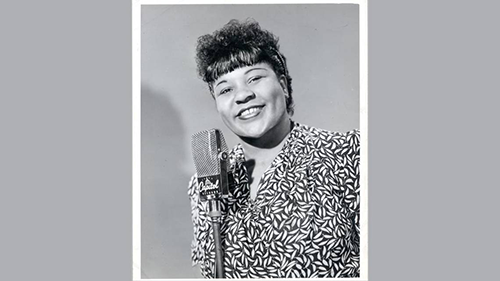Julia Lee – A Complete Biography
Introduction
Julia Lee (1902/1903–1958) was a Kansas City pianist-singer who brought jump-blues swagger, jazz phrasing, and a famously sly sense of humor to American popular music. Her nightclub sets—equal parts torch, boogie, and wink—made her a local legend long before her jukebox smashes “(Opportunity Knocks But Once) Snatch and Grab It,” “King Size Papa,” and “I Didn’t Like It the First Time (The Spinach Song)” lifted her to national fame with Capitol Records in the late 1940s. Though she seldom toured, Lee’s voice and piano anchored the city’s sound between ragtime’s afterglow and rhythm & blues’ rise, and she helped define the bawdy, double-entendre tradition sometimes called “dirty blues.”

Childhood
Julia Lee was born in Boonville, Missouri, and raised in Kansas City in a musical household; her father led a small string group, and her older brother George E. Lee became a prominent local bandleader. As a child she sang at neighborhood gatherings with the family trio and learned piano early, later studying at Lincoln High School and pursuing advanced technique at Western University in nearby Quindaro, Kansas. Those roots—church socials, family bands, disciplined schooling—gave Lee both the chops and the confidence to handle any crowd.
Youth
By her mid-teens Lee was performing professionally with George E. Lee’s Novelty Singing Orchestra, one of Kansas City’s best bands during the city’s roaring 1920s club era. In a scene dominated by men, she stood out as both vocalist and pianist, building a reputation for a husky contralto delivery and flexible, blues-to-ballad repertoire. Early recordings with her brother’s group captured her timing and playful stagecraft, skills that later translated perfectly to small-group studio sessions and intimate nightclub rooms.
Adulthood
Lee launched an independent club career after her brother’s orchestra disbanded in the mid-1930s, fronting combos often billed as Julia Lee and Her Boy Friends. She preferred to stay close to home—partly from a dislike of road life and the hazards of Jim Crow travel—so she became the dependable headliner of Kansas City’s bustling 12th Street nightlife rather than a constant national tourer. Her big break came when producer Dave Dexter Jr., a Kansas City native at Capitol Records, recorded her in the mid-1940s and then signed her in 1946. On records she mixed easy swing, sly patter, and conversational piano, surrounded by A-list sidemen such as Benny Carter, Red Norvo, Red Nichols, and Jay McShann. In 1949 she even sang “King Size Papa” at the White House for President Harry S. Truman—proof that her risqué wit could cross from back-room clubs to the nation’s front lawn.
Offstage, Lee married Kansas City Monarchs catcher-manager Frank Duncan in 1919; their son, Frank Duncan III, became a Negro Leagues pitcher. Father and son formed what is widely remembered as the first father-son battery in professional baseball in 1941. After her divorce from Duncan, Lee later remarried; throughout, she kept a steady working schedule in Kansas City venues.
Major Compositions (and Record Hits)
Lee was a songwriter and a savvy interpreter with a gift for double meanings and dance-floor momentum. Her core Capitol sides—cut between 1944 and the early 1950s—define her legacy:
- “(Opportunity Knocks But Once) Snatch and Grab It” (1947): a nationwide jukebox phenomenon that topped the R&B charts for 12 weeks and reportedly sold over half a million copies.
- “King Size Papa” (recorded 1947; released 1948): an exuberant, innuendo-laden No. 1 R&B hit that also crossed over to the pop charts.
- “Gotta Gimme Whatcha Got” (1946) and “I Didn’t Like It the First Time (The Spinach Song)” (1949): further chart successes that cemented her “songs my mother taught me not to sing” persona while showcasing her pianist’s touch and relaxed time feel.
Even on torch songs and standards, Lee’s phrasing balanced warmth and mischief; Kansas City writers and historians have stressed that her bawdy image sometimes overshadowed her substantial virtuosity at the keyboard.
Death
Julia Lee died in Kansas City on December 8, 1958, reportedly after suffering a heart attack during an afternoon nap. Locally mourned and nationally respected, she left behind a catalog that bridges the city’s jazz heyday and postwar rhythm & blues.
Conclusion
Julia Lee made Kansas City her career’s center of gravity and turned that choice into a strength. By cultivating intimacy with her audience night after night—and by recording smart, small-group sides that played perfectly on jukeboxes—she became both a hometown institution and a national voice of postwar good times. Her records remain masterclasses in conversational swing: piano lines that smile, vocals that tease, and a performer’s instinct that treats the room like a friend. In the story of American blues and jazz, Julia Lee stands as the queen of Kansas City’s after-hours—and a vital link between the rent-party piano of the 1920s and the R&B chartbusters to come.

Comments are closed